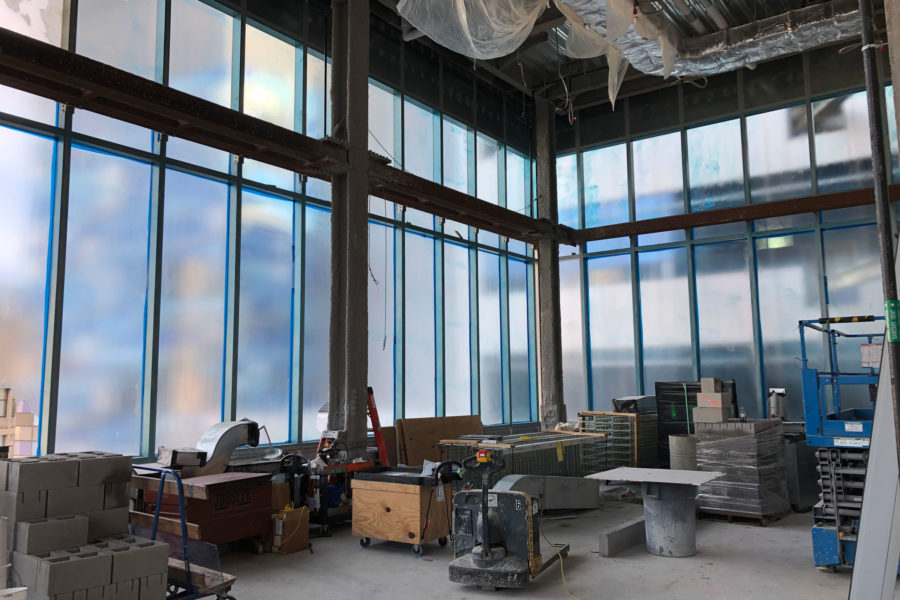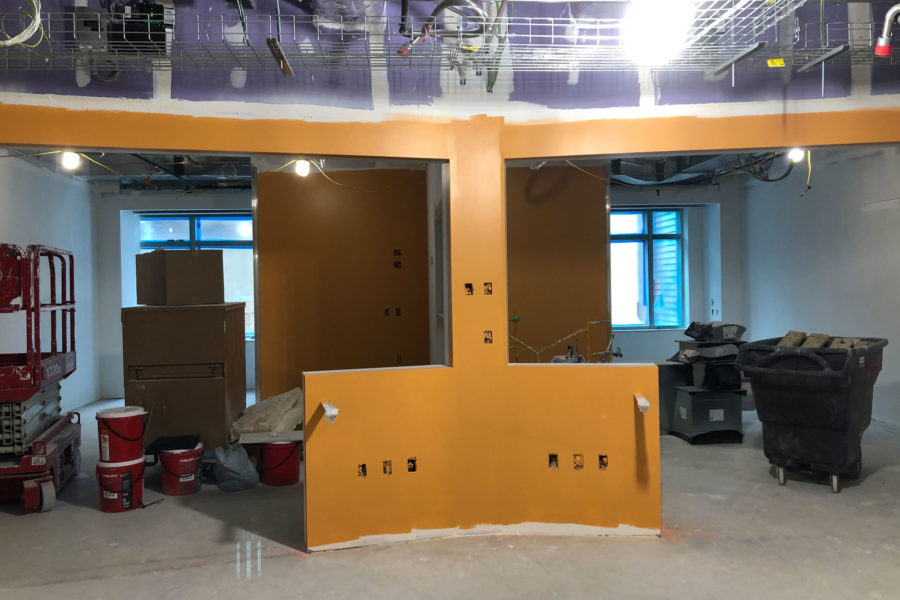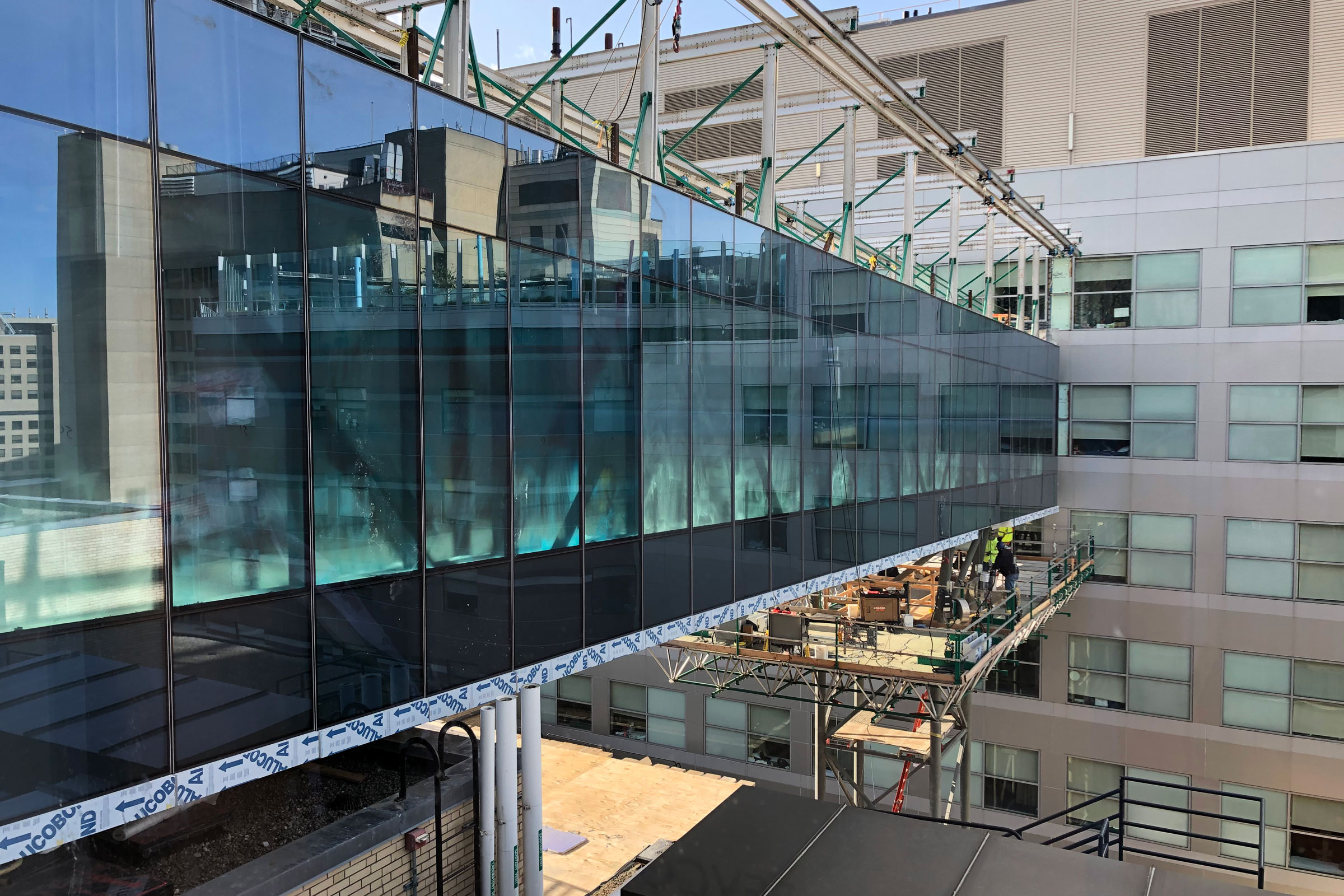Story at a glance:
- Technology like Procore ensures teams deliver projects on time, safely, and on budget.
- Productivity also increases when teams can easily track projects in real time.
- The Hale Family Building at Boston Children’s Hospital used Procore to keep its project on-track.
When Tooey Courtemanche was having his home built in Santa Barbara more than two decades ago, he saw firsthand what happens when there is a lack of coordination on the jobsite. The founder and CEO of global construction management software company Procore saw his money wasted and materials discarded because they were installed incorrectly.
He isn’t alone. An estimated more than $500 billion, according to FMI, is spent on rework every year due in part to poor communication. The former contractor, real-estate developer, and software engineer with a passion for the construction industry came up with a solution.
“I thought, ‘How do I get everyone working off the same sheet of music, everyone to know the budget and the schedule?’” he says. He wrote software where all key players could upload, communicate, view, and store information about the project. That software later became Procore. “I literally didn’t think it would go anywhere. But the project superintendent got a job for another contractor who called me to see if I would license it. I thought, ‘Oh. This could really help the industry.”
Technology is an Enabler

Procore’s products were used at the Hale Family Building. Their platform integrated with other capital planning systems the hospital used, synchronizing project financials so all stakeholders worked off the same data. Photo courtesy of Suffolk
Coordination, collaboration, and alignment are important parts of any construction project. “Technology is critical because it is the tool that makes that happen,” Courtemanche says. “It brings teams together to deliver projects on time, on budget, and safely. All those pieces used to be held together by hope: You hope all interests are aligned. You hope everyone is talking to each other. You hope everyone is reading the same piece of paper. Hope doesn’t always get you very far. There are a lot of inconsistencies in the construction industry, cost overruns, and safety issues because people aren’t coordinating or communicating.”
Procore is web-based, built in the cloud, construction management software. It can be used by all key players of a project including owners, managers, general contractors, and specialty contractors. Anyone who is given access can log in to the system and see the most up-to-date information on all aspects of a project. Procore actually offers an unlimited user model to its customers, meaning a customer can add anyone to the job, whether they’re a paying customer or not. This is critical to project success because if just one team member is left off, the critical workflow will break.
Procore has 13 core products available through its customizable construction management platform. The products provide solutions for managing pre-construction bids and qualifications, workflows, schedules, quality, safety, design coordination, 3D models, productivity, financials, analytics, and more. They also have partnerships with 300 market solutions—technologies spanning everything from bidding and estimating to project closeout and handover—available in their app marketplace to support all needs across the project life cycle. “In most corporations, workflows happen within the walls of that business, but in construction, workflows jump from company to company. All of these complex workflows start in our project management tool. Everyone can go there to see what they need to do, what they need to bring, what is happening that day, they can raise concerns or issues about the job, and turn to other tools that support that core product,” Courtemanche says.
When you eliminate some of the risks and simplify a highly complicated business through the use of a tool like Procore’s, you have more time for inspiration. “Procore can get you back to why you started building in the first place—people, connection, and passion,” he says.
Synchronous Cross-Project Collaboration

Photo courtesy of Suffolk
Procore’s platform was a game-changer in helping McCarthy Building Companies and Mortenson construct Las Vegas Raiders’ 1.8 million-square-foot Allegiant Stadium—one of the largest, most complex design-builds ever—on time, even during a pandemic. It brought the project’s 12,000 round-the-clock workers together to meet schedule and budget requirements in real time. The mega project was completed in 40 months from design start to construction completion, making it one of the fastest stadium builds ever.
Procore’s platform was the hub for the project’s plethora of details. It allowed for everything to be consolidated, organized, and clarified in one transparent location. The platform’s ability to facilitate real-time updates and communication enabled strict adherence to schedule. All construction documents and specifications were available on the platform, saving months that otherwise would have been spent accessing such data.
Similarly, Electrify America, the largest open DC Fast Charging network in the US, is currently using Procore to manage 800 project sites on one platform. The company is building zero-emission vehicle fueling infrastructure involving the installation of 800 charging stations and 3,500 chargers by the end of 2021. Procore’s platform allows the company to consolidate, track, and manage all projects at once—from permits and purchasing to completion.
Ultimate Budget Control and Productivity
Staying within budget is a huge issue with any project. It can be difficult to properly manage financials if everyone is reporting spending with pen and paper or a minimally accessed spreadsheet. Procore’s financial management products allow everyone to know project spending in real time, keeping budgets on-track.
These products were used during Boston Children’s Hospital’s 10-year, $3 billion strategic capital plan, involving the construction of a state-of-the-art pediatric care facility, the Hale Family Building. Procore’s platform was integrated with other capital planning systems used by the hospital, synchronizing project financials so all stakeholders were working off the same data. The tool reduced risk, kept everyone in the know, and allowed work to be as productive as possible.
Xcel Mechanical Systems, design-build mechanical and plumbing contractor on the LAX TBIT Terminal Cores and APM Interface Project, found Procore’s project management products essential to improving productivity on this design-build project in the world’s fourth busiest airport. The $14 billion airport modernization project was considered the largest public works program in the history of Los Angeles. Procore’s Models tool and associated plugins allowed for the company to bring both the design model and construction model from the office into the field. Field foremen were able to view real-time design changes, saving the project countless hours and costs on potential double-installations and rework.
Less rework also means less waste going into the landfill. “In the European Union alone, 25% of the debris in landfills are because of construction. It is a remarkable environmental travesty, and it puts a lot of risk into the industry,” says Courtemanche. “We need these systems in place to build efficiently with less waste, to build better.”
Enhanced Field Safety
Safety is critical on any jobsite. Procore’s products allow all players to report if they see a current or potential risk, so it doesn’t become a serious situation. “Often people don’t know there is a problem until it is too late. When you have everyone collaborating on the same platform, if someone sees something that is not in compliance they can post it and get it rectified,” Courtemanche says. Procore’s platform provides checklists and protocols, specific to each project, to be followed on the jobsite so every worker is as safe as possible. It also provides analytics that give the industry a better view of where safety issues are happening and what can remedy those problems. During the Covid-19 pandemic, Procore, with the industry as a whole, leveraged its safety products to keep jobsites open and active. “We had to partner with the industry to come up with protocols that hadn’t been done before,” Courtemanche says. The company worked to implement protocols for proximity and masks on jobsites.


